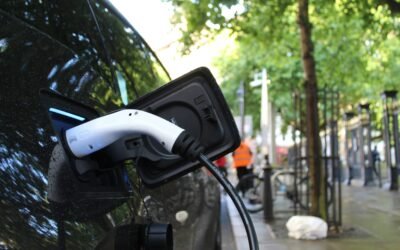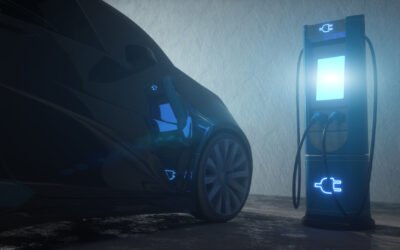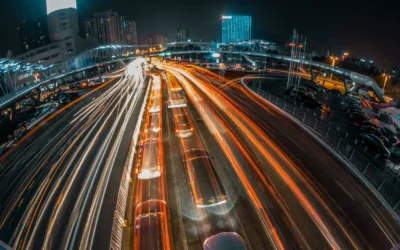- India is a pioneer in electric vehicle adoption, emphasizing public transport to reduce pollution.
- FAME II sees significant changes, with extended subsidies for electric buses and reduced support for two-wheelers.
- The Gross Cost Contract model and subsidies have driven electric bus adoption, with over 15,000 orders in progress.
Amid the bustling roads of Southeast Asia, India stands out prominently as a frontrunner in the adoption of electric vehicles (EVs). The nation’s approach is not solely centered on innovation but also involves the creation of an environment that encourages both businesses and consumers to embrace EVs.
Initially, the primary emphasis was on electrifying passenger vehicles through the FAME I initiative. However, with the advent of FAME II in 2019, originally slated to conclude in 2022, a discernible shift occurred. The focus transitioned towards the electrification of public and shared transportation.
Why E-Buses are Gaining Traction
Under the umbrella of FAME II, the Department of Heavy Industries (DHI) has an ambitious plan to back the procurement of as many as 7,090 e-buses. With a financial muscle of roughly 450 Million USD, India is making a robust statement.
Updates in Fame II
Significant changes have reshaped the landscape of FAME II in India, with distinct impacts on passenger vehicles and electric buses. Notably, the deadline for passenger vehicles under FAME II has been extended until 2024. However, the subsidies for electric two-wheelers have witnessed a reduction, with the cap lowered from 40% to 15% of the vehicle cost, and the total subsidy amount has been adjusted from around USD 180 per kWh to USD 120 per kWh, subject to the established cap.
In contrast, FAME II for electric buses has seen an extension, now stretching until 2026. These shifts in government policy reflect a clear emphasis on expediting and promoting the adoption of electric buses over passenger vehicles, driven by the recognition of their critical role in mitigating pollution in India. The replacement of heavy transport like buses with emission-less vehicles has the potential to significantly reduce CO2 emissions, surpassing the impact of electrifying passenger vehicles.
It’s worth noting that FAME I observed higher uptake for passenger vehicles compared to heavier transport like buses, and the government identified possible reasons for this trend. The initial investment for heavier transport is considerably greater than that for lighter vehicles, and most of the demand for such transportation arises from State Transport Corporations (STRCs), which face financial constraints to the extent that even substantial subsidies may not strongly incentivize them to electrify their fleets.
Gross Cost Contract (GCC) Model: A Game-Changer
In response to the challenges in the electric bus adoption landscape, the government introduced the innovative GCC model as part of FAME II. This model departs from the traditional practice of consumers purchasing buses outright and, instead, they pay the supplier based on the number of kilometers the bus is driven. Moreover, consumers are no longer burdened with the task of procuring and maintaining the infrastructure necessary for the operation of electric buses; this responsibility now falls on the supplier. The infrastructure encompasses a range of elements, such as electricity, chargers, transformers, substations, civil works, installations, maintenance, and labor costs. Procuring entities only need to remunerate suppliers with a fixed rate for each kilometer an electric bus travels. This approach significantly reduces the barriers faced by transport corporations and offers a more cost-effective solution. The combination of the GCC model and available subsidies, which cover 60% of the electric bus cost over three years in installments of 20% each, has contributed to a nationwide surge in electric bus adoption.
As indicated in the annual reports of prominent players in the Indian electric bus market, there are over 15,000 electric bus orders lined up for delivery in the coming years, underlining the remarkable growth in this sector.

Figure 1: The Active E-Bus Fleet in India.
Source: PTR Inc.
Recent Achievements
The Delhi Transport Corporation (DTC) has taken significant steps toward bolstering its electric bus fleet. It recently issued a Letter of Intent for 950 low-floor electric buses to Switch Mobility and entered into a contract with JBM Autos & PMI Electro Mobility for the deployment of an additional 1,049 electric buses. In another move to embrace electric mobility, DTC has integrated 400 electric buses from TATA into its existing fleet, thereby elevating its current count of electric buses to 800.

Figure 2: Order Book.
Source: PTR Inc.
Furthermore, a noteworthy development is the introduction of the PM e-bus Seva Scheme, which has the ambitious objective of introducing 10,000 electric buses in 169 cities lacking organized bus services. The scheme is set to commence within the next five to six months and has a final target year of 2037. This comprehensive initiative carries an estimated cost of USD 6.9 Billion, with a substantial USD 2.4 Billion contribution from the central government, while the states will shoulder the remaining financial burden. Within the government’s USD 2.4 Billion allocation, USD 1.9 Billion is earmarked for the procurement of buses, USD 272 Million for infrastructure development and associated facilities, along with an additional USD 181 Million designated for advancing green urban mobility.
Looking Forward
India’s e-bus market is experiencing a robust surge, with substantial backing from both the central and state governments. There is a consistent influx of orders for fleet electrification. Notably, the primary demand emanates from State Transportation Companies, while private sector interest in electric buses for staff or similar purposes remains notably low. According to the PTR database, India had a total active fleet of over 4,250 electric buses (BEV & PHEV) by the end of 2022. Projections suggest that the e-bus segment is poised for impressive growth, with a projected CAGR of 53.1% until 2030, largely attributed to sustained government support. However, this growth is heavily contingent on government policies, and any disputes or disagreements between the government and private sector suppliers have the potential to impact the segment’s progress. Such disagreements may revolve around compensation to companies operating under the GCC arrangements if the operational costs of electric buses experience a significant upswing.
EV Charging Infrastructure Service Overview
The research presented in this article is from PTR's EV Charging Infrastructure market research. For information about this service please submit a request shown below.
Contact Sales:
Europe
+49-89-12250950
Americas
+1 408-604-0522
Japan
+81-80-7808-1378
GCC/Rest of APAC
+971-58-1602441
More about our:
EV Charging Infrastructure Market Research
Recent Insights
Exploring the European EVCI Services Market Key Players and Emerging Trends
There has been a significant surge in the development of EVCI due to the widespread adoption of EVs in Europe. By 2030, it is expected that Europe...
Nordics EVCI Market Comparison: Quarterly Growth and Market Dynamics – 2024
This infographic examines the ambitious policies and regional targets that are propelling the growth of Electric Vehicle Charging Infrastructure...
Electrifying Future: Emerging Trends and Strategic Targets in the Middle East
This infographic presents an overview of the burgeoning electric vehicle (EV) market in the Middle East. It highlights the region's ambitious...


